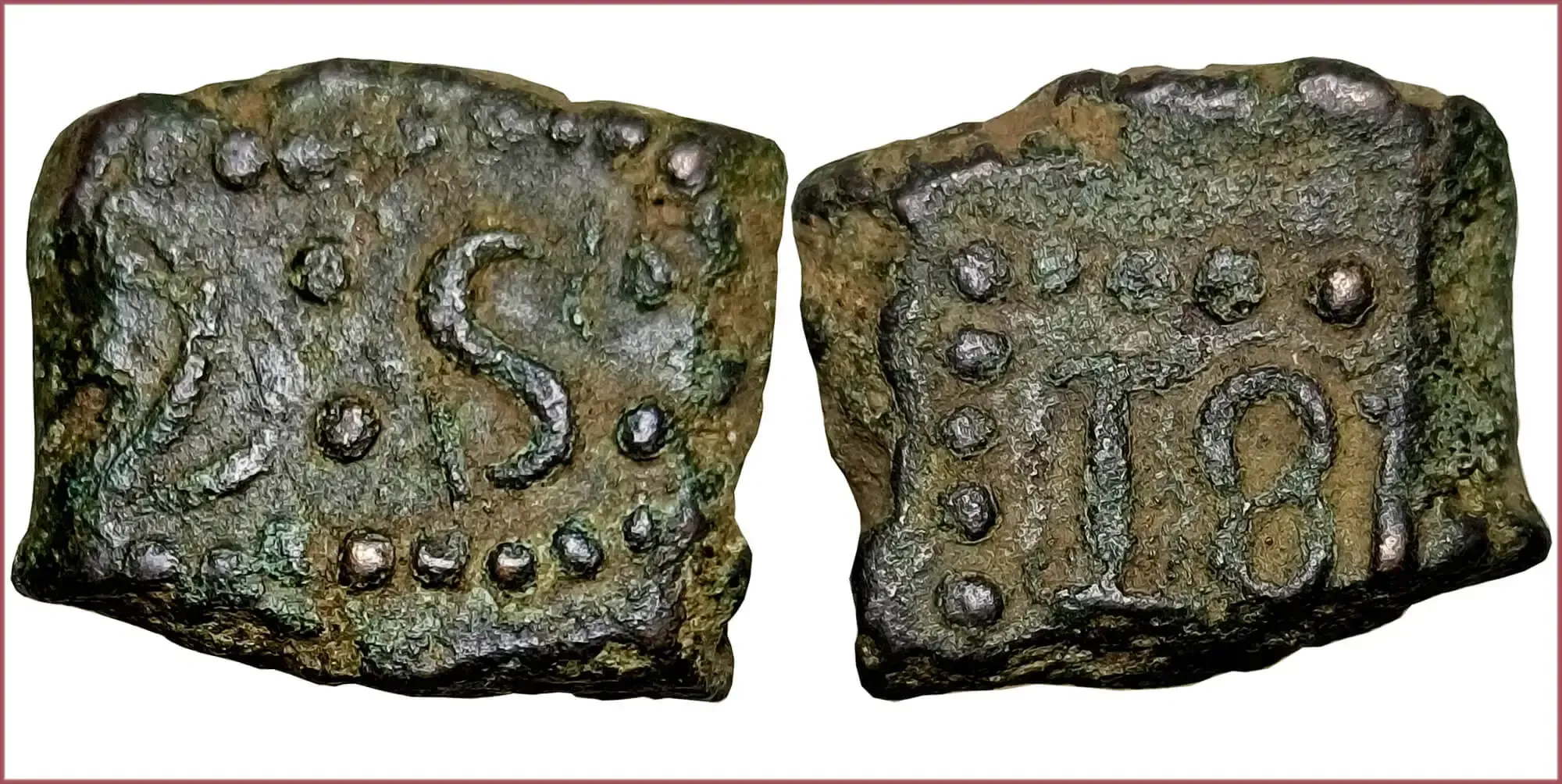STUIVER BONK: COIN OF NETHERLANDS EAST INDIES
Stuiver bonk (2 stuiver), 1810: Netherlands East Indies
Netherlands East Indies — Dutch colony with territory mostly comprising the modern state of Indonesia. It existed until 1949.
2:S surrounded by pearls laid out in the shape of a rectangle: 2 stuivers.
Half of the date is lost on this particular specimen (also surrounded by pearls). Most likely, the year 1810 should have been indicated here, because the weight corresponds to exactly such a date according to numismatic catalogs.
This stuiver bonk was made on the island of Java.
- Copper: 18 mm - 8.44 g
- Reference price: 19$
COIN STUIVER BONK — WHERE & WHEN (coins catalog: by names & emitents)
- NETHERLANDS /DUTCH/ EAST INDIES (1796-1818): stuiver bonk
STUIVER BONK as coin name.
Stuiver bonk — conventional name for coin-like rectangular copper ingots of the Dutch East Indies (until 1798 it was the Dutch East India Company: in Dutch "Vereenigde Oostindische Compagnie", VOC). They had released on Java (modern Indonesia) from 1796 to 1818. Most numismatic catalogs consider them as coins.
At first, coins for the Dutch Indies were minted in the metropolis — on the territory of the Netherlands. However, in the middle of the 18th century a local mint was opened in the city of Batavia (modern Jakarta, the capital of Indonesia). The issue of coins was concentrated on Java island.
In 1796, due to a shortage of standard money signs, temporary substitutes for the usual coins began to be issued. A batch of long copper bars was imported from Japan. Each of them was cut into rectangular blanks of different sizes, with the denomination (in stuivers) being manually applied on one side and the date on the other. That's how stuiver bonks were born. Several types are known: ½, 1, 2 and 8 stuivers (denominations were indicated in an abbreviated format, for example: 1 S, 2 S...). The largest weighed more than 150 grams. Over time, the size of the stuiver bonks began to gradually decrease, and at the end of the issue, their weight did not exceed 10 g.
The name "stuiver bonk" reflects the essence of this, strictly speaking, not quite coin: the denomination is "stuiver" (an old Dutch coin), the format of the currency sign is "bonk" (a chopped off piece of copper ingot of an irregular, close to rectangular shape).
In general, bonks are usually called massive copper ingots, which in ancient times were used on Java as money. The word "bonk" in translation from the Dutch language means "big piece" (this is a common, but not confirmed version).
By the way, in some ways, the kinship of the stuiver bonks with macuquinas can be traced — round pieces of silver cut from a cylindrical ingot (with further artisanal trimming to the required weight) with Spanish coats of arms inscribed on them.
Numismatic sources attribute both the stuiver bonk and the macuquina to the so-called "Hammered coinage" — "Hand minted coins" (as opposed to earlier coins made by casting, and later — by machine minting).











